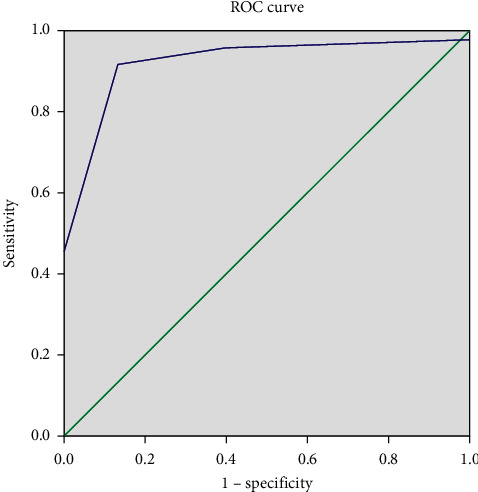骨肉瘤预后因素与新辅助化疗组织病理反应的相关性:一项回顾性研究。
IF 1.6
Q4 ONCOLOGY
International Journal of Surgical Oncology
Pub Date : 2021-04-26
eCollection Date: 2021-01-01
DOI:10.1155/2021/8843325
引用次数: 7
摘要
背景:结合新辅助化疗和辅助化疗的多模式治疗是提高骨肉瘤总生存率的标准治疗方案。然而,关于影响新辅助化疗后组织病理反应的预后因素的数据有限。患者和方法。我们回顾性地回顾了2008年至2018年间本中心诊断为骨肉瘤的患者。我们根据性别、年龄、肿瘤大小、诊断部位和分期、转移部位、手术类型、坏死率(基于Huvos分级系统)和新辅助化疗周期数对患者进行了特征分类。我们将对新辅助化疗的反应分为Huvos 1级和2级患者的不良反应和Huvos 3级和4级患者的良好反应。我们还记录了患者的生存和随访信息。结果:我们回顾了64例5-65岁的患者,以男性为主(62.5%)。股骨远端是骨肉瘤最常见的部位(53.1%)。根据Huvos分级系统,15例(23.4%)患者对新辅助化疗反应良好,49例(76.6%)患者对新辅助化疗反应不良。基于多因素分析,性别(p = 0.012)、年龄(p = 0.029)、症状持续时间(p = 0.004)、新辅助化疗后肿瘤增大(p 20岁= 1分,女性= 1分,症状持续时间> 12周= 1分,新辅助化疗后肿瘤增大= 2分)。该评分系统将患者分为两组,总分大于2分预测新辅助化疗反应较差。结论:年龄、性别、症状持续时间、肿瘤大小是影响骨肉瘤患者新辅助化疗组织病理反应的预后特征。本文章由计算机程序翻译,如有差异,请以英文原文为准。

Correlation between Prognostic Factors and the Histopathological Response to Neoadjuvant Chemotherapy in Osteosarcoma: A Retrospective Study.
Background Multimodality treatment, incorporating neoadjuvant chemotherapy and adjuvant chemotherapy, is the standard management plan for osteosarcoma that increases the overall survival (OS) rate. However, data regarding prognostic factors affecting the histopathological response following neoadjuvant chemotherapy is limited. Patients and Methods. We retrospectively reviewed patients diagnosed with osteosarcoma in our center between 2008 and 2018. We classified patient characteristics according to gender, age, tumor size, site and stage at diagnosis, site of metastasis, type of surgery, necrosis rate based on the Huvos grading system, and the number of neoadjuvant chemotherapy cycles. We divided response to neoadjuvant chemotherapy into poor responder for patients with Huvos grades 1 and 2 and good responder for patients with Huvos grades 3 and 4. We also documented patients' survival and follow-up information. Results We reviewed 64 patients within 5–65 years of age, dominated by men (62.5%). The distal femur (53.1%) was the most common site of osteosarcoma. Fifteen (23.4%) patients had a good response while 49 (76.6%) patients were poor responders to neoadjuvant chemotherapy based on the Huvos grading system. Based on multivariate analysis, gender (p = 0.012), age (p = 0.029), symptom duration (p = 0.004), and tumor enlargement after neoadjuvant chemotherapy (p < 0.001) were significantly associated with histopathological response. A scoring system was proposed integrating these significant variables (age > 20 years = 1 point, female gender = 1 point, symptom duration > 12 weeks = 1 point, and increased tumor size after neoadjuvant chemotherapy = 2 points). This scoring system divides patients into two groups with a total score of more than two predicting a poor responder to neoadjuvant chemotherapy. Conclusions Age, gender, symptoms duration, and tumor size after neoadjuvant chemotherapy are the prognostic features that affect the histopathological response to neoadjuvant chemotherapy in patients with osteosarcoma.
求助全文
通过发布文献求助,成功后即可免费获取论文全文。
去求助
来源期刊
CiteScore
3.70
自引率
0.00%
发文量
5
审稿时长
20 weeks
期刊介绍:
International Journal of Surgical Oncology is a peer-reviewed, Open Access journal that publishes original research articles, review articles, and clinical studies in all areas of surgical oncology.

 求助内容:
求助内容: 应助结果提醒方式:
应助结果提醒方式:


